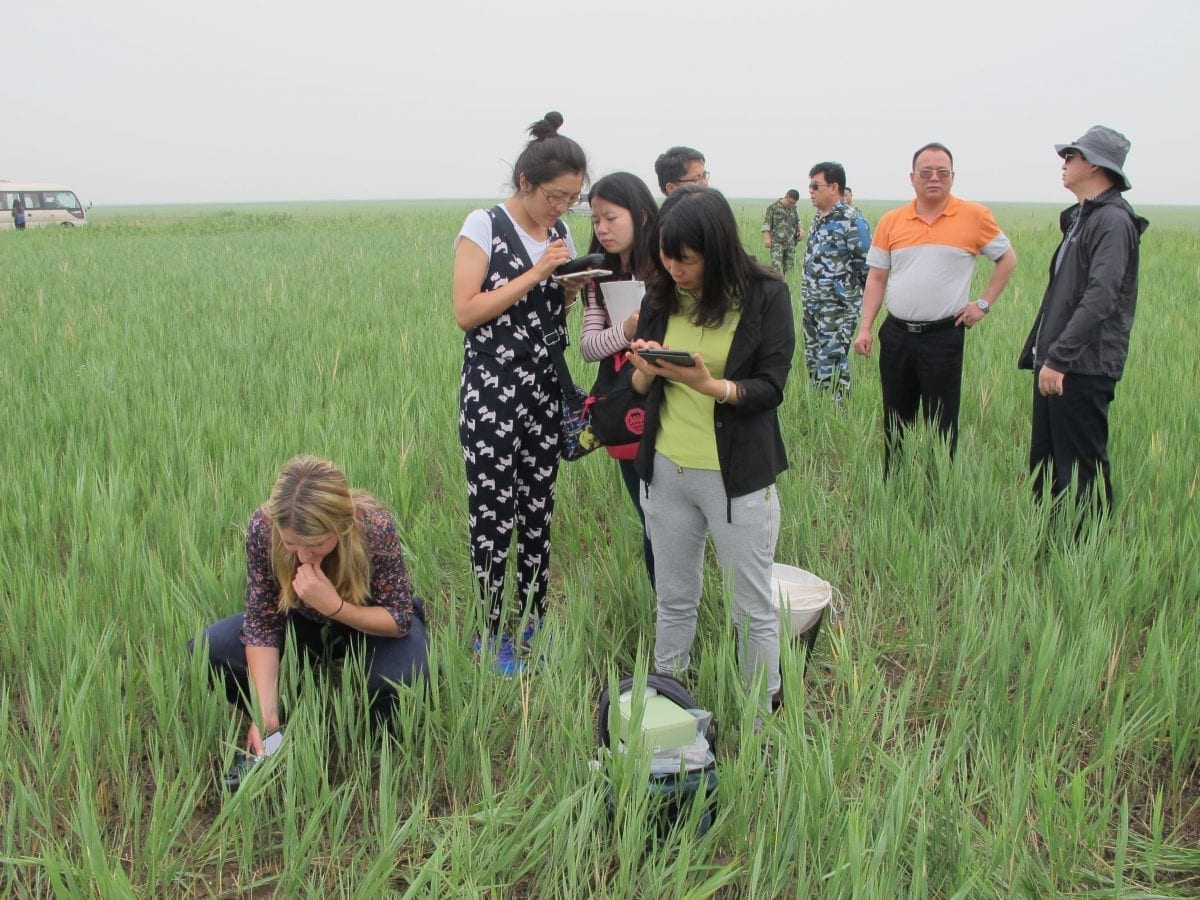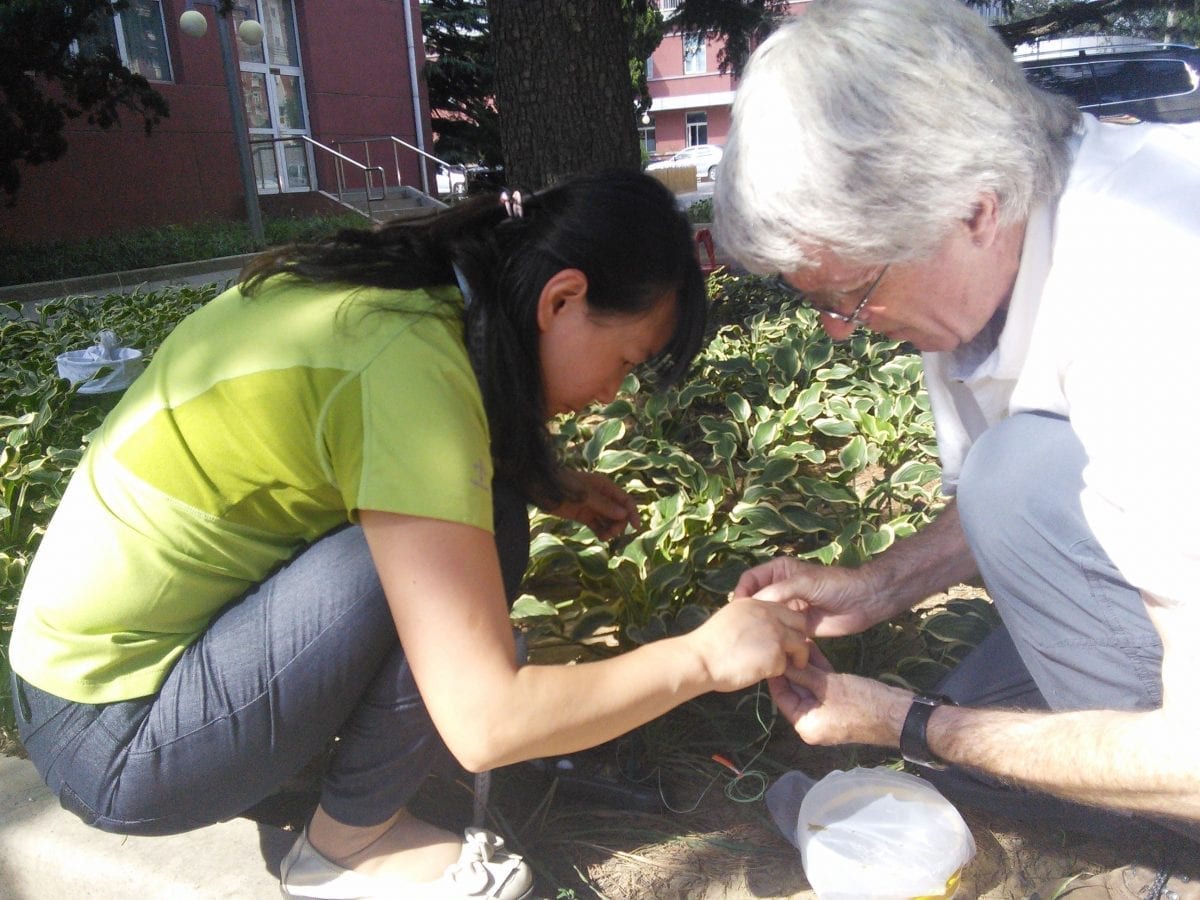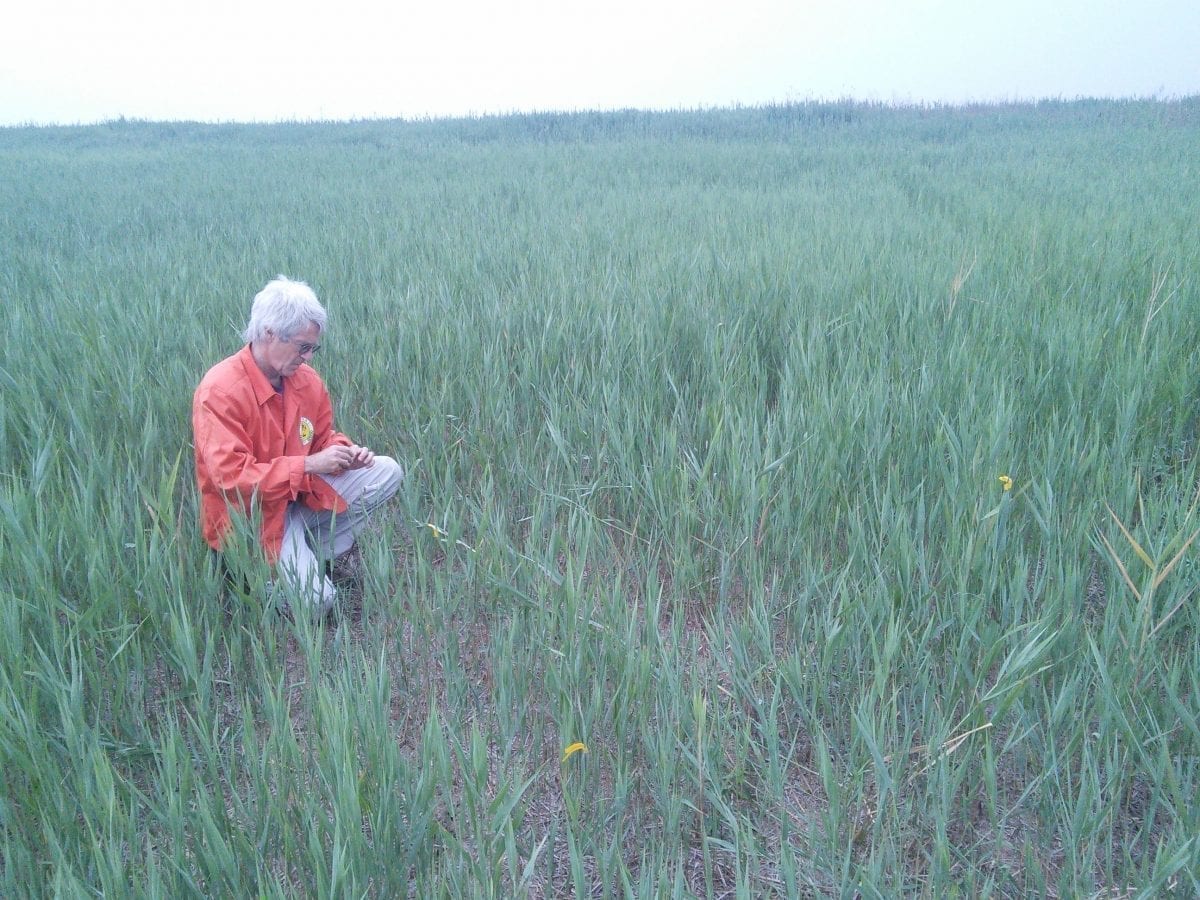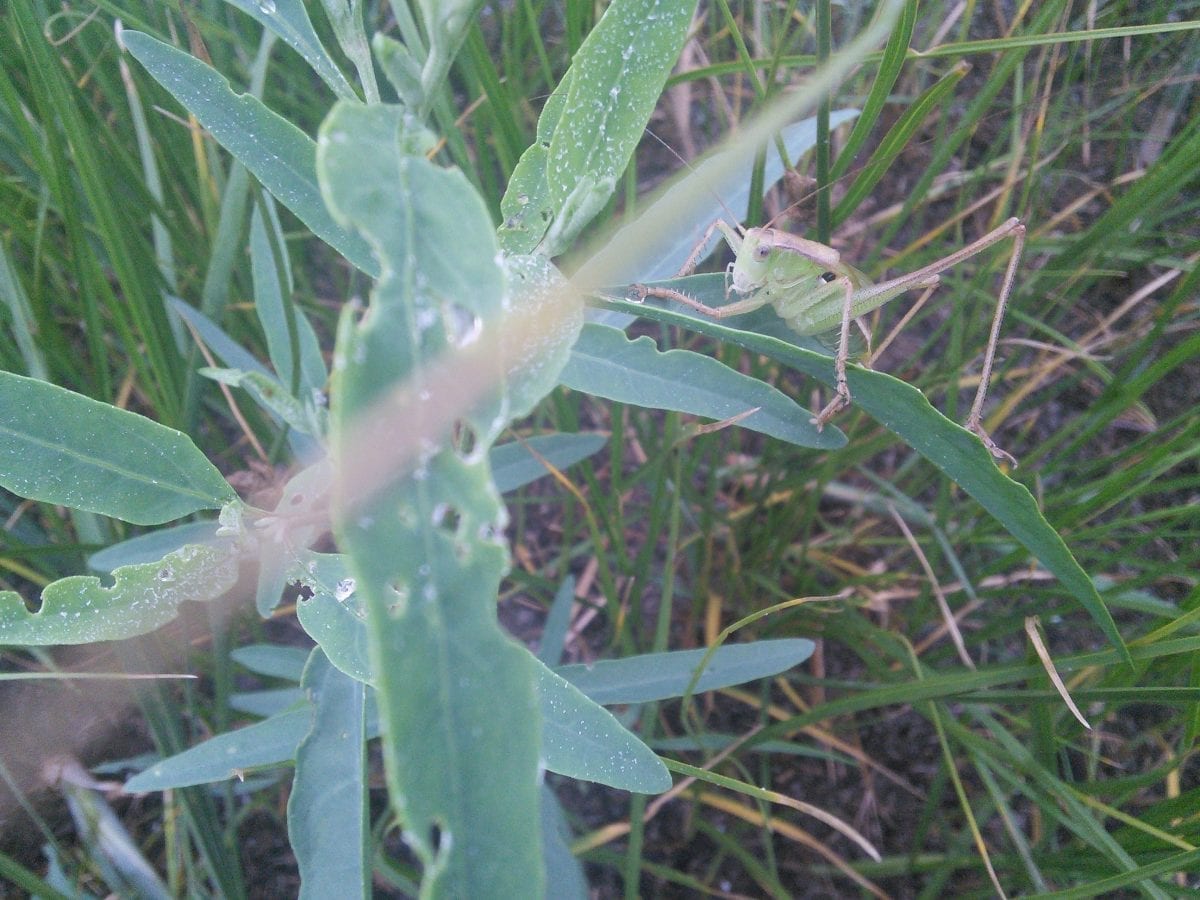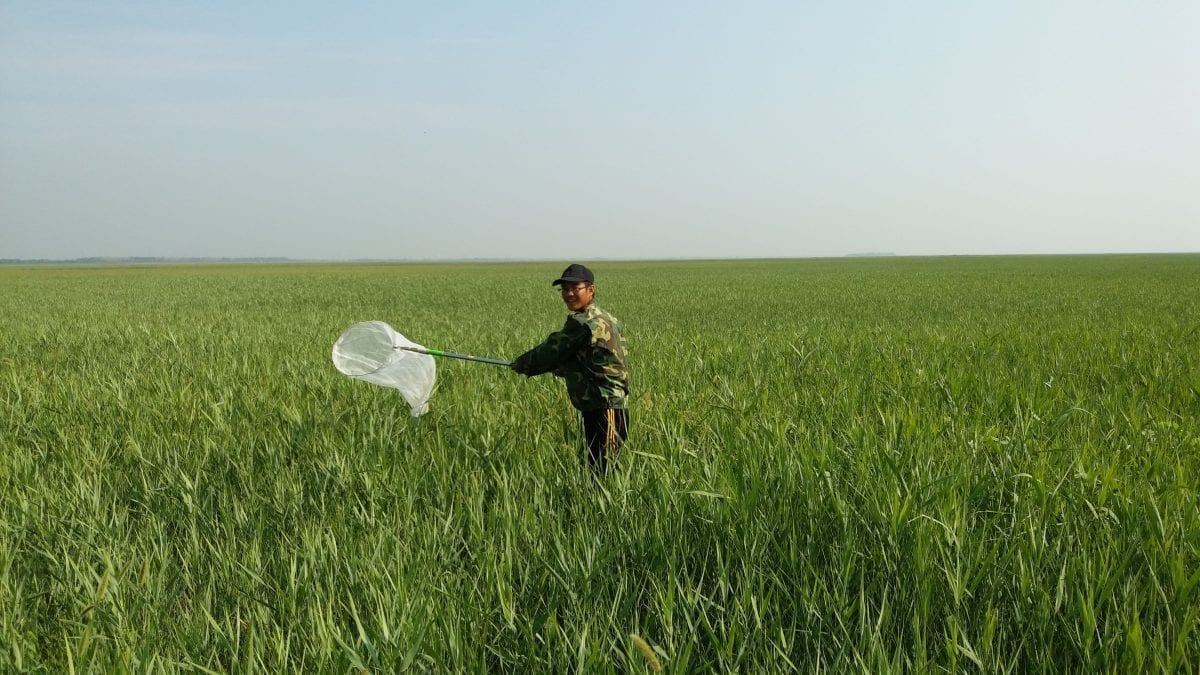Improving the rational use of pesticides for locusts in China
Agriculture is very important to China and chemical pesticides are often used to control their associated pests. Biopesticides, which have a low impact on surrounding plants and the environment can be used instead and China wants to switch over to them. Using CABI’s expertise, this project uses Earth Observation (EO) and other data to build a prototype system that provides information on locust control in China.
Project Overview
So, what’s the problem
The Chinese Ministry of Agriculture have set targets to achieve zero-growth in chemical pesticide use by 2020. Biopesticides are mass-produced micro-organisms or derivatives of micro-organisms which kill pests and have low impact on non-target species and the environment. In China, the National Agro-Tech Extension and Service Centre (NATESC) currently use biopesticides on 20% of occasions to control locusts, however their aim is to increase their useage to 70% of the time when they need to control locusts, to reduce its environmental impact.
What is this project doing?
This project combines expertise from both UK and China, in the fields of Earth Observation (EO) and agriculture. Through the multidisciplinary teams from China and the UK, the project aims to build a prototype system that provides information to Chinese locust control extension workers at NATESC.
The system aims to give timely advice on the possible location and timing of locust outbreaks in China using data derived from satellites along with information to assist extension workers to make informed decisions about when a biopesticide would be effective to apply in place of chemical insecticides.
The prototype system will aim to combine Earth Observation data, historical weather data derived from re-analysis of weather forecasts and weather forecast data from China. The potential use of data collected through radar entomology will also be appraised. Modelling approaches taken from the literature will be built upon and improved for both forecasting locust outbreaks and to give advice how quickly a biopesiticde will work based on local abiotic conditions.
Results
So far, background reviews have been written on locust biology in relation to the use of biopesticides by CABI and the Chinese Academy of Agricultural Sciences (CAAS), the CABI and Zhejiang University (ZJU) have reviewed the status of using Earth Observation data for forecasting outbreaks of locusts globally and everyone then looked at where gaps in knowledge for China lie.
Background data on locust occurrence is being collated by NATESC to assist with identification of locust hotspots and breeding areas, and the Institute of Remote Sensing and Digital Earth, Chinese Academy of Sciences (RADI, CAS) and the National Engineering Research Center for Information Technology in Agriculture (NERCITA) are comparing locust outbreak data to both historical meteorological and image based data of outbreak regions.
For biopesticide efficacy modelling, fieldwork has been conducted in the Tianjin area of China assessing locust behaviour, location in the canopy and temperatures in relation to the ambient surroundings. New body temperature models are being built to relate how locust body temperature to a variety of temperature products derived from Earth observation sources for the species of interest Locusta migratoria manilensis. Rothamsted Research has also been undertaken field work to assess the viability of using radar entomology to identify the migration of solitary locusts within the Tianjin area of China.
Project Manager


